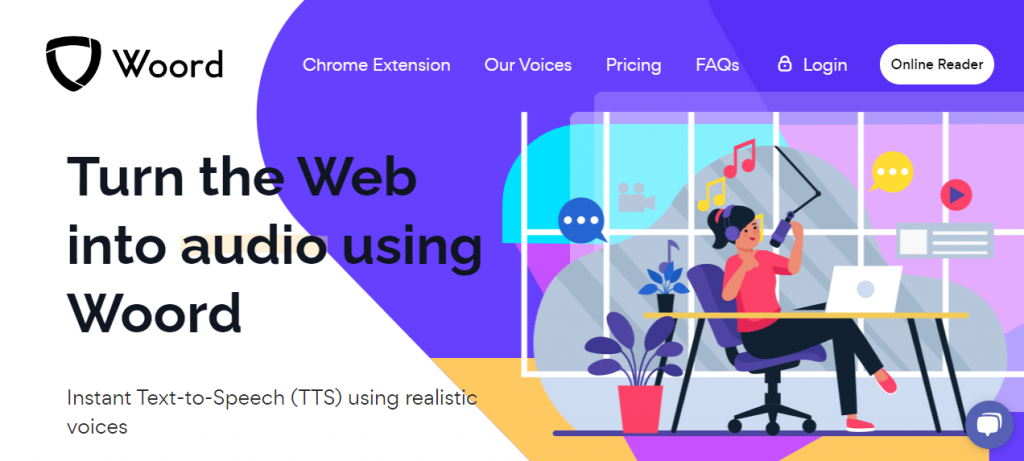Text-to-speech (TTS) technology has become an increasingly important tool in today’s society, offering a range of benefits and applications that have made it a crucial aspect of modern communication.
Everyone learns a foreign language at a different rate. While learning the fundamentals of a language only takes a little work, mastering intermediate and advanced levels takes significantly more commitment.
If you’re not employing the proper strategy, you could waste hours studying or not paying attention to what you truly need to learn. Your progress may be halted, and you might become frustrated. Because of this a Text to Speech API tool like Woord can help you learn any language.
How Can Woord Help For Language Learning?
- Pronunciation guide: Text-to-speech is excellent for practicing and mastering your pronunciation. While Google Translate can get the job done in a pinch, the levels of customization and the variety of voices and reading speeds available with text-to-speech software make this tool all the more valuable.
- Improve literacy skills: Boosting your literacy skills is essential to learning a language, and speech synthesis software (another term for text-to-speech) can help you with that. You can use OCR (optical character recognition) technology to scan difficult texts and have the software read them aloud.
- Proofreading: Professionals and native language speakers use text-to-speech technology to help them spot errors in their writing or spelling. So, naturally, it’s also useful for foreign language learners.
Why Do We Recommend Woord?
Woord is a service that allows developers to convert text into speech.
This enables you to listen to any text you want and create applications that can read aloud any text; such as news articles, product descriptions, or even animated series scripts. The text can be in any format as long as it’s understandable by computers. It can be plain text, XML, JSON, or even programming code.
The API then processes the text and returns a response in a format that can be used by your application. This response may be in the form of an audio file that you can play back; or a string of commands that you can use to control a voice synthesizer.
With Woord, you can bring your applications to life, by adding life-like speech capabilities. For example, in E-learning and education, you can build applications leveraging Woord’s Text-to-Speech (TTS) capability to help people with reading disabilities.

Which Languages Are Supported By This API?
It supports different Varieties of the English Language (US, UK, Australia, India, and Welsh), Spanish, Spanish Mexican, Portuguese, Brazilian Portuguese, French, Canadian French, German, Russian, Catalan, Bengali, Danish, Welsh, Turkish, Hindi, Italian, Japanese, Chinese, Cantonese, Vietnamese, Arabic, Dutch, Norwegian, Korean, Polish, Swedish, Bulgarian, Czech, Filipino, Hungarian, Finnish, Greek, Gujarati, Icelandic, Indonesian, Latvian, Malay, Mandarin Chinese, Romanian, Serbian, Slovak, South African, Thai, Ukrainian, Gujarati, Punjabi, Tamil, Telugu.
How To Use It
To convert text into audio with Woord, all you have to do is:
1. Open the API and paste in the text or URL you want to convert to audio.
2. Select the language you want the audio to be in and the speed at which you want it to be read.
3. Once you’ve done that, Woord will create an audio file that you can listen to.


